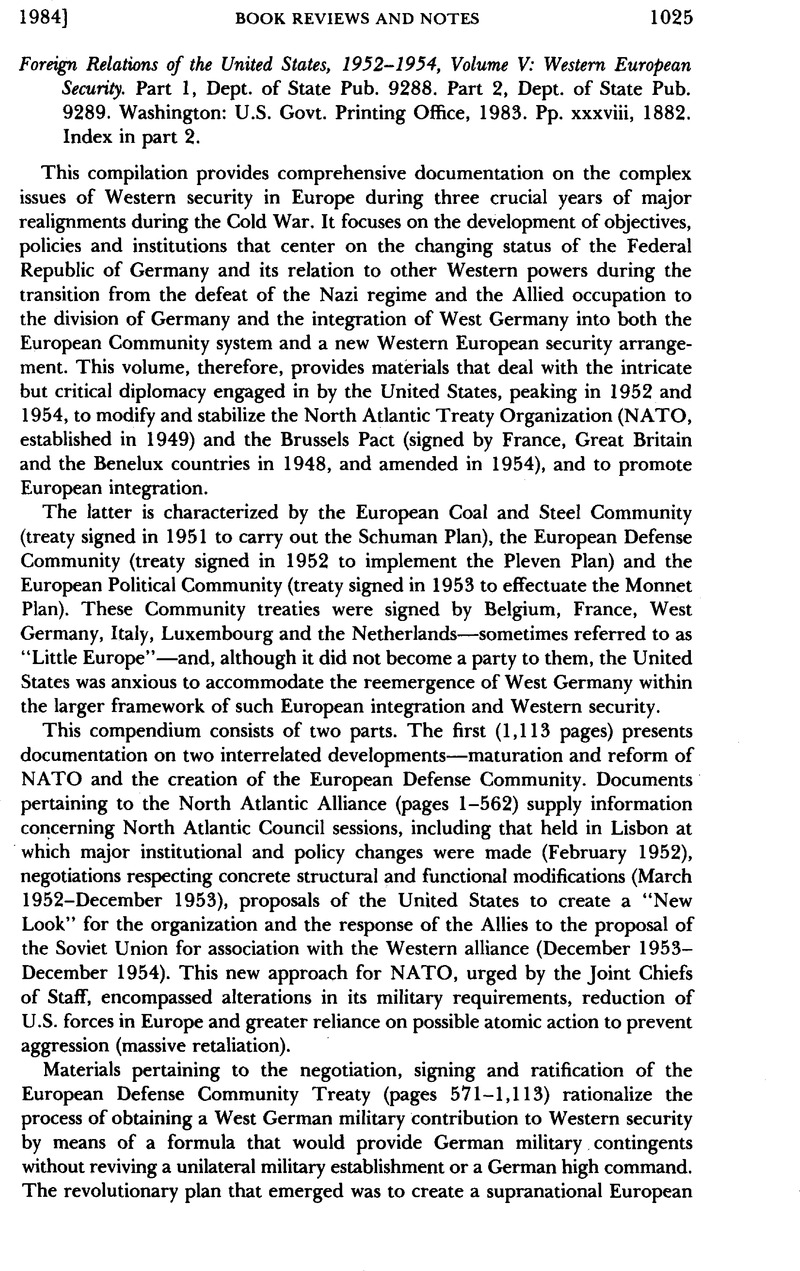No CrossRef data available.
Published online by Cambridge University Press: 16 May 2017

1 To illustrate the complexities with which the compilers of these documents were confronted in dealing with this interlinked set of agreements, it is necessary to note that—so far as final instruments are concerned—the European Defense Community Treaty with its supporting materials entailed 16 documents. These embraced a basic treaty, a convention, two agreements, nine protocols, a declaration, one annex and a supplementary treaty between the United Kingdom and the Defense Community participants. The Contractual Agreements, providing for the termination of the occupation of West Germany, consisted of a general convention with two annexes, three supplementary conventions with nine annexes and a subsidiary agreement, and 25 complementary letters—for a total of 41 instruments. A protocol to the North Atlantic Treaty and a Tripartite Declaration (the United States, the United Kingdom and France) also were essential to this integrated package. All of these arrangements, which totaled 59 instruments, had to be ratified by all of their signatories for any of them to come into effect.
According to the Final Act of the London Nine-Power Conference, when negotiations shifted from the European Defense Community Treaty to the expansion and modification of the Brussels Treaty in 1954, the additional set of at least 12 documents was negotiated, composed of a protocol to the North Atlantic Treaty supplemented by two West German declarations and three unilateral assurances (United States, United Kingdom and France) and a protocol to the Brussels Treaty accompanied by three annexes consisting of a draft declaration of West Germany, three statements of assurances (United States, United Kingdom and France) and a conference paper on the German military contribution. This brought the overall total to more than 70 interlocking documents ranging from formal conventions, treaties and agreements to unilateral declarations of policy and intent.